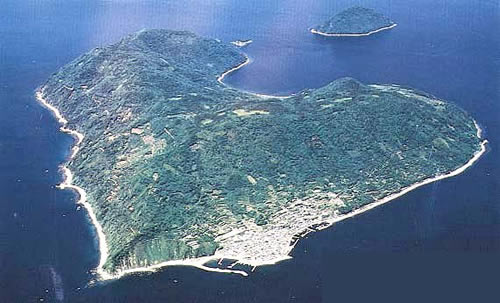Jake Davis has posted a wonderful visual record here of a festival on the small Inland Sea island of Iwaishima. Like many others, I’m a great fan of the Inland Sea and have tried to visit as many of the islands as possible – or at least those that have been spared the unfortunate uglifications of what Alex Kerr terms ‘the Concrete State’. Despite the small and aging populations, some of the small islands manage to preserve traditions that stretch back well over a millennium, as can be seen in the colourful portraits of Jake’s photo essay.
Local festivals are a true treasure in Japan’s cultural mosaic and one of the country’s most appealing aspects. They require a great deal of time and effort, but the collaboration is an important aspect in strengthening community ties and a sense of identity. To me, they are the very building blocks on which the whole modern construct of ‘Shinto’ has been built.
*****************************************************************************
The Wikipedia entry for Iwaishima runs as follows:
Iwai Island (祝島) is an island of the Inland Sea in Japan. With a total altitude of 82 meters, it lies at the south-eastern edge of the Yamaguchi Prefecture. The name is derived from the ancient ritual of passing travellers and is in fact home to a ceremonial fishing dance specific to the island as noted in the crew journey log of the Hokule on their journey from Micronesia to Japan.
In 1982, Chugoku Electric Power Company proposed building a nuclear power plant near Iwaishima, but many residents opposed the idea, and the island’s fishing cooperative voted overwhelmingly against the plans. In January 1983, almost 400 islanders staged a protest march, which was the first of more than 1,000 protests the islanders carried out. Since the Fukushima nuclear disaster in March 2011 there has been wider opposition to construction plans for the plant.


Leave a Reply